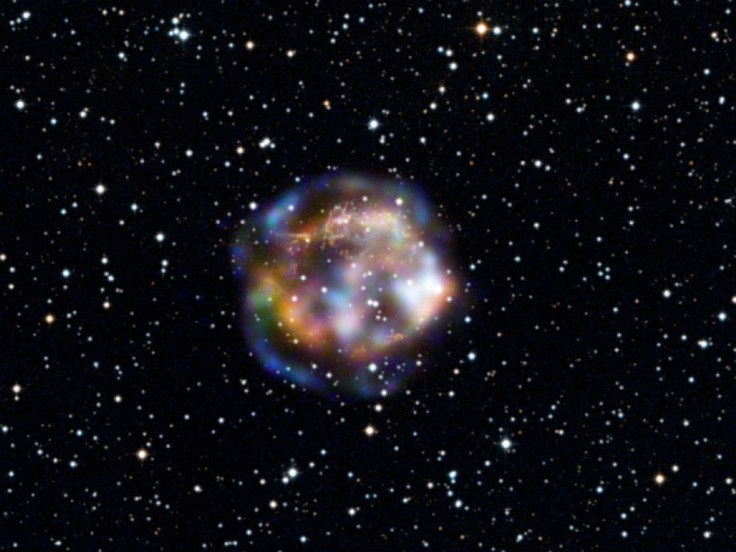Massive Star Explosion Captured By NASA [PHOTO]

NASA has released a brilliant photo of the aftermath of a massive star explosion. The supernova remnant, Cassiopeia A, is 11,000 light-years from Earth.
A supernova is caused by a large star collapsing onto itself, usually shrinking into a dying star, such as a white dwarf. During the supernova, the matter of the star gets expelled outward, causing a shockwave, through the space surrounding the star. Gasses and other particles are heated and collected as the explosion expands in an almost spherical shape, according to NASA.
The supernova remnant of the star explosion was captured using NASA’s Nuclear Spectroscopic Telescope Array (NuSTAR), an X-ray telescope. The goal of NuSTAR is to capture supernovae and black holes, events that occur at much higher energies than previous X-ray telescopes could capture.
The light from the star explosion captured by NuSTAR is believed to have first reached Earth nearly 300 years ago, taking 11,000 years to reach our planet, according to NASA. The star is long dead, notes NASA, but there is much to learn following the star’s explosion.
In the detailed photo, the spherical supernova remnant is surrounded by a blue ring which, according to NASA, is caused by the resulting shockwave of the supernova colliding with space debris surrounding the star. The shockwave propels the space debris to speeds that are just a fraction of 1 percent below the speed of light, according to NASA.
The other colors represent the energy as captured by X-ray light. Blue areas have the highest energy, 10 to 20 kiloelectron volts, green areas are between eight and 10 kiloectron volts and red areas contain energy between 4.5 and 5.5 kiloelectron volts.
NuSTAR has allowed NASA to capture a star explosion in much more detail, leading to a better understanding of supernovae, supernova remnants and black holes. Fiona Harrison, NuSTAR principal investigator at the California Institute of Technology in Pasadena, said in a statement, “Before NuSTAR, high-energy X-ray pictures of this galaxy and the two black holes would be so fuzzy that everything would appear as one pixel.”
Speaking about Cassiopeia A, Brian Grefenstette, a lead researcher at California Institute of Technology, said, “Cas A is the poster child for studying how massive stars explode and also provides us a clue to the origin of the high-energy particles, or cosmic rays, that we see here on Earth.”
© Copyright IBTimes 2025. All rights reserved.






















